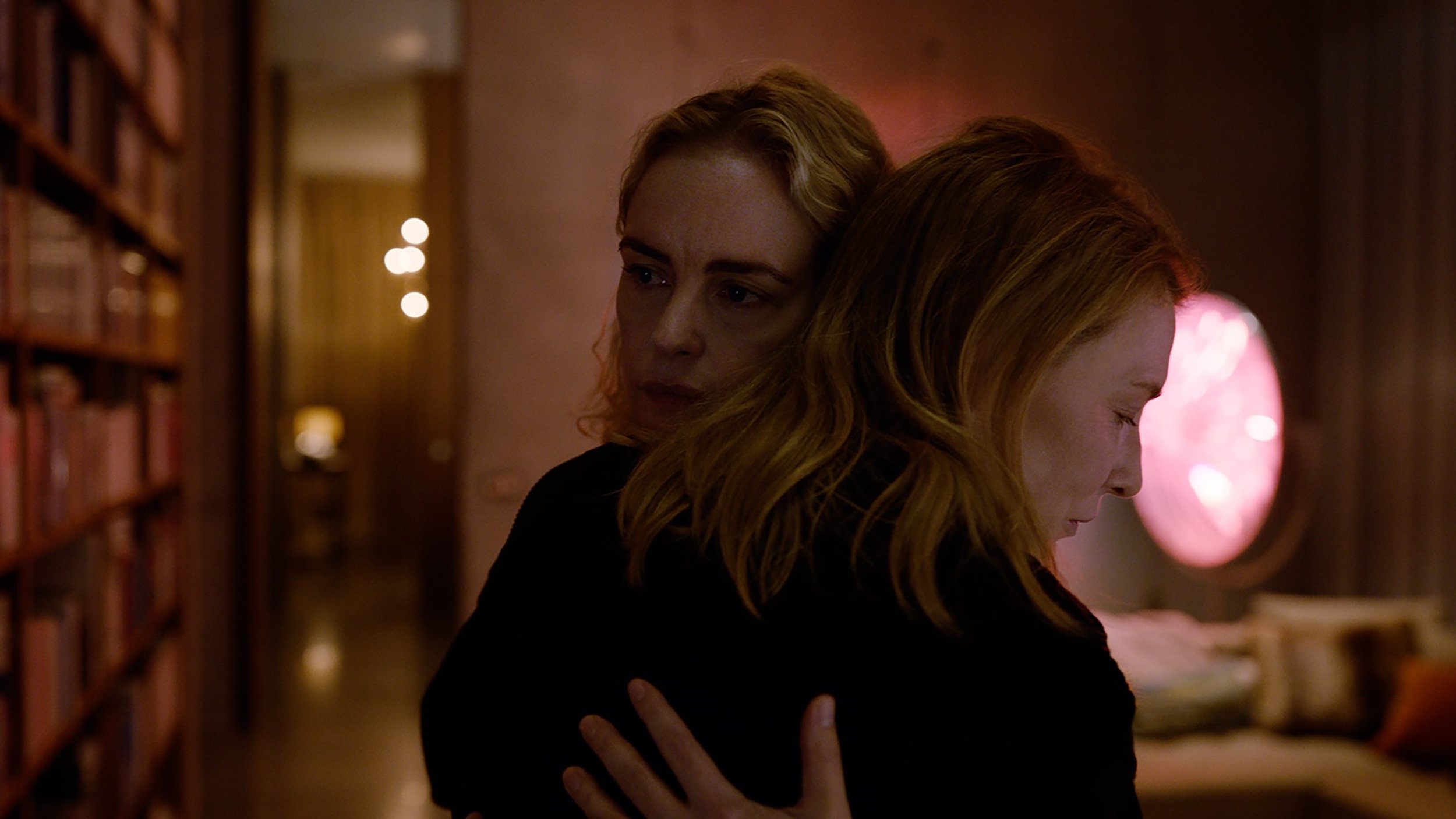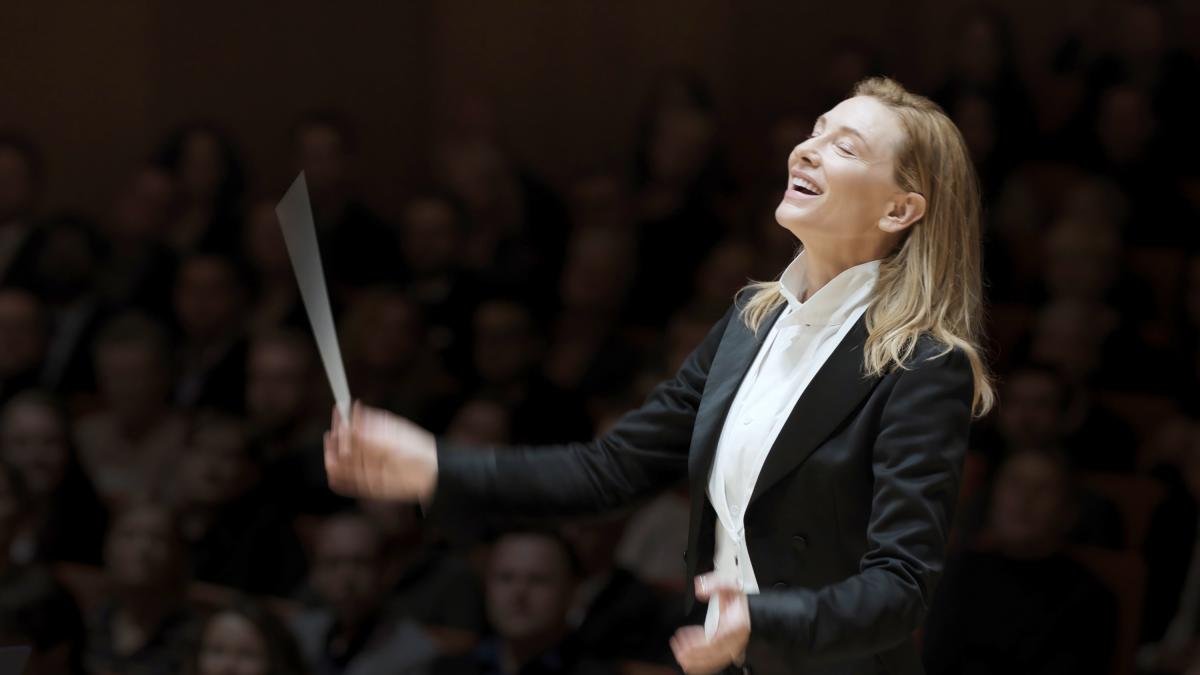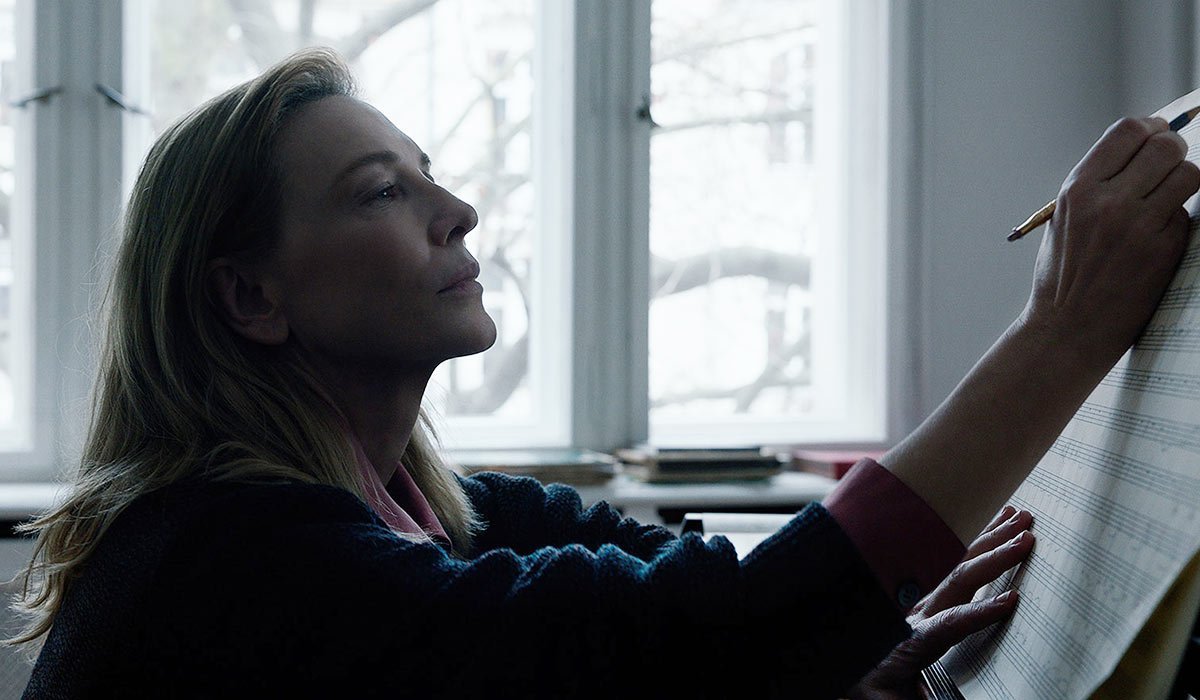We Don't Need Tár Think Pieces: A Think Piece
When I came out of Tár, I was attempting to describe the film to someone and found myself at a loss for words. I felt so strongly about the film because I knew I thought it was masterful and brilliant. Still, I had a hard time even starting to talk about it. How I ultimately chose to describe it was that the movie is truly a “work of film art.” Like the symphonies present throughout the film and the works by masters hanging in our great museums all over the world, Tár also provokes feelings and emotions. I know it does those things within myself. Whether others experience those feelings as love or hatred for the work doesn’t matter as much; what matters is that the art provokes anything at all. Three viewings later, I’m even more convinced the film is amazing, though I’m still uncertain I’ve fully pinned down all my feelings and thoughts. In a filmic landscape overcrowded by superhero films and low-rent horror, all of which I do really like, it’s incredible to find a story that only seeks to ask questions and offers little in the way of spoon-fed answers.
Tár isn’t necessarily experimental, nor is it what we typically think of as art house cinema. It is a straightforward narrative with conventional story beats, editing, score, etc. That all said, it seeks to say more than what is simply on screen. While Tár is a movie about the world inhabited by a talented composer-conductor, the film is not about orchestras or music. It is a prestige piece which utilizes its set and setting as tools to talk about larger ideas.
Many masterworks of cinema attempt to capture the milieu of the time as Tár does. Paul Thomas Anderson’s There Will Be Blood (2007) expertly critiques the toxic battle between capitalism and organized religion, and how they make monsters of us all. In a similar way, Paddy Chayefsky’s scathing critique of media and control, Network (1976), puts news media on blast and ridicules consumption for consumption's sake. Both films show how the main illness of society at a given time can corrupt the most extraordinary and ordinary of individuals. They also have definitely encouraged discourse about what is “wrong” with the world in their respective decades, and have continued to since. Like these samples of prestige cinema before it, Tár is a critique of the greater societal landscape. It is as about right now as those two films were. It is about the dangers and trappings of power, just as those films are. Where Tár starts to deepen the conversation is that it is also about how far we, as every single one of us in our role as enablers, will allow someone to go on abusing that power.
Tár seeks to implicate us and asks us to probe into ourselves how we could, and why we would, let someone get away with things we know all too well are, if not morally gray, downright sinister. Why is it that people within artistic communities and powerful industries are aware of the bad behavior of those at the top and allow them to continue to get away with their malfeasance time and time again? The film reveals a real world phenomena: that until a certain charismatic or exceedingly talented individual goes “too far” we are, if not happy to accept, then at least complacent in allowing them to operate in the world when their actions are damaging to those around them. We allow their actions so long as what they are contributing to the world can be perceived as important. Why is Lydia able to do the things she does? Is it because she is such a singular talent? Maybe so, but even then everyone seems to know what is going on. Everyone appears to know how she is, and yet no one dares speak up until it’s too late. Is certain art so great that we can really allow ourselves to ignore the transgressions of its originators?
What we have with Tár is undeniably relevant - a story about the mutating effects of power in our society. How proximity to that power creates complacency and how we are drawn into that power even when we may suspect that the person wielding it is up to questionable actions. There’s no denying that watching Cate Blanchett in her tailor-made suits (that she reportedly picked out herself) in her international world of class and status is incredibly compelling. This is done on purpose to ensnare us in her aura. She is someone who is so concerned with her own greatness, someone who likely never gives a passing thought to her negative actions until a reminder is thrown in her face or delivered via nightly hauntings. We can’t help but be entranced by her as much as her onscreen fans. This is the true arrogance of the Lydia character—we should all be so lucky to be in the presence of such a savant. It is that alluring posturing by people like her that can genuinely get to a lot of us. This is a tale about how far we let those in positions of control go until enough is enough. This is not a story about one specific thing like social media or cancel-culture, but the nebulous tentacles of power and how it metastasizes in one individual and in the society in which they operate.
All that said, Tár is a largely unbiased film. At least that is the opinion of this critic. The most potent stance Tár takes is the opening credits. First that they are there at all, but additionally how they unfold. The full credits unfold at the very front of the film in reverse order from the norm. In a story which is about one person’s abuse of their power and centering of herself, Field centers all the artisans who worked on the film and puts them center stage before getting to the main action. Furthermore, the film’s prologue largely centers on the artisans who make Lydia’s gorgeous suits and there are little moments throughout the film which highlight the technicians, grunt-workers, and personnel which help the well oiled machine of a large symphonic orchestra run smoothly. Lydia may want us to believe, as she tries to stress in a interview with The New Yorker’s Adam Gopnik, that the orchestra’s success all rests on her. Yet, there are so many moving parts and people involved that her argument only showcases the folly of Lydia’s arrogance. These are all ingredients which a less skillful and detail-oriented filmmaker may not even think to include. To me, this is all Field saying that these people who prop up his “genius” (and Lydia’s at that) are just as important as himself, the auteur. In a piece about singular talent, this creative choice explicitly calls into question whether we should consider Field and Lyidia’s art as singular at all.
There’s a scene late in Tár in which Lydia watches old footage of Leonard Bernstein and breaks down at the sight of him asking an audience, “Don’t you feel triumphant?” before he goes into a melodic soliloquy about the power of music. It’s here where the only shred of sympathy is granted to Lydia—she cries and we see a close up of her tears prior to her being confronted by her brother whilst wearing a childhood medal. This once well-respected talent has come a long way from her literal fall from grace flat onto her face. This sympathy, albeit arguably unearned by the character, is short lived and justly so. Field seeks to paint Tár as not a literal monster. It would be too easy for us to see Lydia as an embodiment of evil. This shred of indignity is important to understand that she is a real person. The world is much more complicated than Lydia did bad things, so she is all bad. She did not rise up from literal hell to exact predatory behavior on young women. She is someone who, corrupted by the power which she was given, has left behind the innocence and wonder of the child who won those medals she puts around her neck. She has possibly even forgotten the glory and power of music. Perhaps she has forgotten what it was like to “feel triumphant.” This fleeting moment of sympathy doesn’t mean we have to like her, nor does it mean we really have to feel truly sorry for her. It’s there to show us that she is human and that this kind of person does, in fact, exist.
By the end of the film, in a much talked about final scene which is being interpreted numerous ways, we are laughing at her. We’re never really told what Lydia thinks of conducting an orchestra for a Monster Hunter concert. She approaches the work by studying the score, imploring her players to think about the intent behind the music, and taking in the culture around her for those she will be performing. For all intents and purposes, she appears to be just as nervous before the concert as she was before her New Yorker interview. There have been interpretations that this final scene is the final nail in her coffin. She is debased, forced to stand atop the podium for a type of music which she likely believes beneath her. This moment is undeniably funny and a perfect end to the film. However, I’m less convinced that Lydia is in on the joke. She probably does not love the fact that she is in this situation. However, it’s interesting to note Lydia is no stranger to scores and more populous symphonic music (remember, she’s an EGOT winner). More importantly, it is vital to note that Lydia is not gone—she still has opportunity and is finding work, which is probably the most true-to-real-life thing about the film. There is absolutely a world in which she climbs back to the status she once held. She may never fully get back to where she was, but she is not down for the count. Here is the sad truth—abusers like Lydia don’t actually ever go away. Among the numerous indictments of modern society today, this may be the most harrowing.
Upon a quick google search of the film you will see pieces in highbrow publications about the suits, art world, and the Todd Field of it all. You’ll also see pieces about how boring it is and what a slog it is to get through. Personally I didn’t feel the run time, though I understand how one could. It’s no small feat to sit in a dark room for any length and be swept into the world of international classical music with very little world building at play. Field and Blanchett go to great lengths to create a nuanced character and dynamic story that is completely captivating for its nearly three hour runtime.
I’ve seen some critics of the discourse surrounding the film—how it is a critic’s piece and something for the industry to masturbate around. Additionally, I’ve read reviews that suggest that what Blanchett is doing is no feat of acting, that it is just merely her putting in the required basics of the job and nothing extraordinary. There are inherently undertones of misogyny and misconceptions about the intentions of the actors and filmmakers baked into these opinions. But, I think it comes from a place of not giving oneself over to the film fully. Tár is a work that demands submission. Just like the crescendos of the orchestra, you must allow the seemingly simplistic photography and performances to wash over you.
Save for a very steady and impressive one-take scene and some interesting compositions, the cinematography in Tár is not Hoyte van Hoytema-expressive or Greg Fraiser technically blow-you-out-of-the-water. It is subtle, just as the narrative and performances given by the entire ensemble are subtle. This is not to say that they are unimpressive. Quite the contrary, the details and quietness of it all is spellbinding. There are some haunting moments in this that trend more towards horror than drama, but what details and technique really sticks out for me is Field's use of symbols and mirroring through the film. As one especially striking example, there is a young and beautiful Cellist named Olga that Lydia fixates on halfway through the film while preparing to conduct Mahler’s 5th symphony as a high point in her career. After her inevitable downfall has played out, she is presented with a slew of young and beautiful masseuses arranged just like an orchestra would be. She is told to pick who she would like as her masseuse. She is then caught in a stare by the woman bearing the label “No. 5” whom is seated right where Olga would have been in the orchestra itself. We are not the only ones who pick up on the mirroring here. It actually upsets Lydia so much that she runs out of the spa and vomits in the street. It’s even possible that she is overwhelmed at this moment with disgust for herself. But, we’ll never know for sure. All this is to show that if you allow it to be, Tár is one of the most immersive and consuming pieces of cinema art of the year with striking imagery and well-crafted allegory. At the risk of sounding shill-ish about it—it’s a damn masterpiece and one perfectly crafted and fit for our times.
Field has been less than forthcoming when it comes to talking about what his film and what all of its ingredients mean in relation to the things he is attempting to say. He is not alone in the greater American film landscape. Jordan Peele has been reluctant to lay it on too thick when it comes to explaining his recent film, Nope. That being said, in our current discourse it is all too quick after a premiere that we see think piece after thinkpiece or clickbait articles such as “MULTIVERSE OF MADNESS AND ALL THE EASTER EGGS EXPLAINED!!!” These clickbait-y articles seek to do all the heavy lifting for the audience. They don’t allow us the opportunity to discover new things about ourselves and the world around us. Tár and its artisans have created a canvas which in many ways acts as an ink-blot test through which the viewer’s own biases and opinions will be reflected back at themself. Instead of offering up surface level critiques and making immediate value judgments of those critiques, Tár brings attention to complex problems which exist in the real world.
I understand the irony that I’m criticizing our landscape of film critique in the think piece you’re reading right now. But, I believe Tár provides a Trojan-horse-like opportunity for us to talk about film as art with our friends, families, and acquaintances. We tend to engage less with those close to us when it comes to film. We rely on critics and pseudo-analysis to do the heavy lifting on thinking about film and themes for us.
I think Tár is one film that puts the onus on each individual to discuss our modern society and norms. One article or another could tell you what Tár does and doesn’t mean. I think it’s a rare example to take that ability back and see what each of us come up with on our own. I don’t know if I’ve said anything revolutionary or groundbreaking here and I’m not necessarily trying to. I’m simply trying to show that Tár has something to say and that it gives everyone something to say too. Like her autobiography, “Tár on Tár”, you really don’t need another think piece about Tár. Tár wants you to think for yourself. It implicates us and provokes us. It drives ideas that we are forced to confront and consider in regards to our own feelings and worldview. This is plainly a film that has no single correct interpretation and that’s what makes discussing it so compelling. I’m not writing this to explain to you what Tár is. I’m writing this to show you that it is many things at once, and that it provides an outlet to talk about the world around us. This, in my humble opinion, is the mark of truly great art.






Ian (they/them) is a film lover & writer based in Fort Worth, TX. They love art and cult film above all else. That said, they are a firm believer that cinema offers something to everyone and that this is what is truly beautiful about the art form. When not in front of the big screen they can be found playing with their border collie, Breck, or baking bagels.